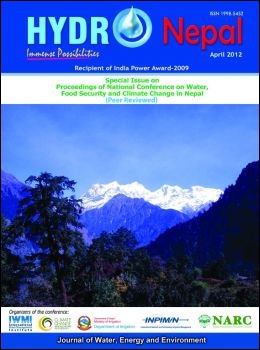Genetic Variability of Drought Adaptive Traits in Nepalese Wheat (Triticum aestivum L.) Germplasm
DOI:
https://doi.org/10.3126/hn.v11i1.7208Keywords:
Triticum aestivum L., landrace, water use efficiency, RWC, STI, drought stressAbstract
Wheat (Triticum aestivum L.) is one of the major cereal crops vital for global food supply. Most of the wheat crop in developing world including that of Nepal is either grown with limited irrigation or under rainfed conditions and thus face moisture stress at one or more growth stages limiting grain yield. An experiment was carried out at the Institute of Agriculture and Animal Science, Rampur, Nepal, to evaluate the genetic variability of selected drought adaptive traits in Nepalese wheat germplasm. The wheat genotypes evaluated comprised of Nepalese landraces and commercial cultivars, CIMMYT (International Center for Maize and Wheat Improvement) derived advanced introduction lines and three checks with differential drought adaptability. The wheat genotypes were grown in pots (single plant) arranged in a replicated split plot design in greenhouse under two contrasting moisture regimes, optimum and moisture stressed. The genotypes were evaluated for water use, water use efficiency, relative leaf water content and biomass production. The ANOVA (Analysis of Variance) revealed significant variation between environments and among the wheat genotypes for most of the traits studied. A wide range of variability was observed for water use, water use efficiency, biomass yield and relative leaf water content in moisture stressed and non–stressed environments. Nepalese cultivar Gautam showed a number of favorable drought adaptive traits, whereas, Bhrikuti was average in this respect. Based on the scores of drought adaptive traits recently released Cultivar (cv). Vijay was characterized as drought sensitive. A number of landraces and advanced breeding lines showed high level of water use efficiency and other positive traits for drought adaptation.
DOI: http://dx.doi.org/10.3126/hn.v11i1.7208
Hydro Nepal Special Issue: Conference Proceedings 2012 pp.64-68
Downloads
Downloads
Published
How to Cite
Issue
Section
License
The copyright of the articles and papers published is held by HYDRO Nepal Journal.
The views and interpretation in this journal are those of author(s), and HYDRO Nepal does not bear any responsibility for the views expressed by authors in the journal.




